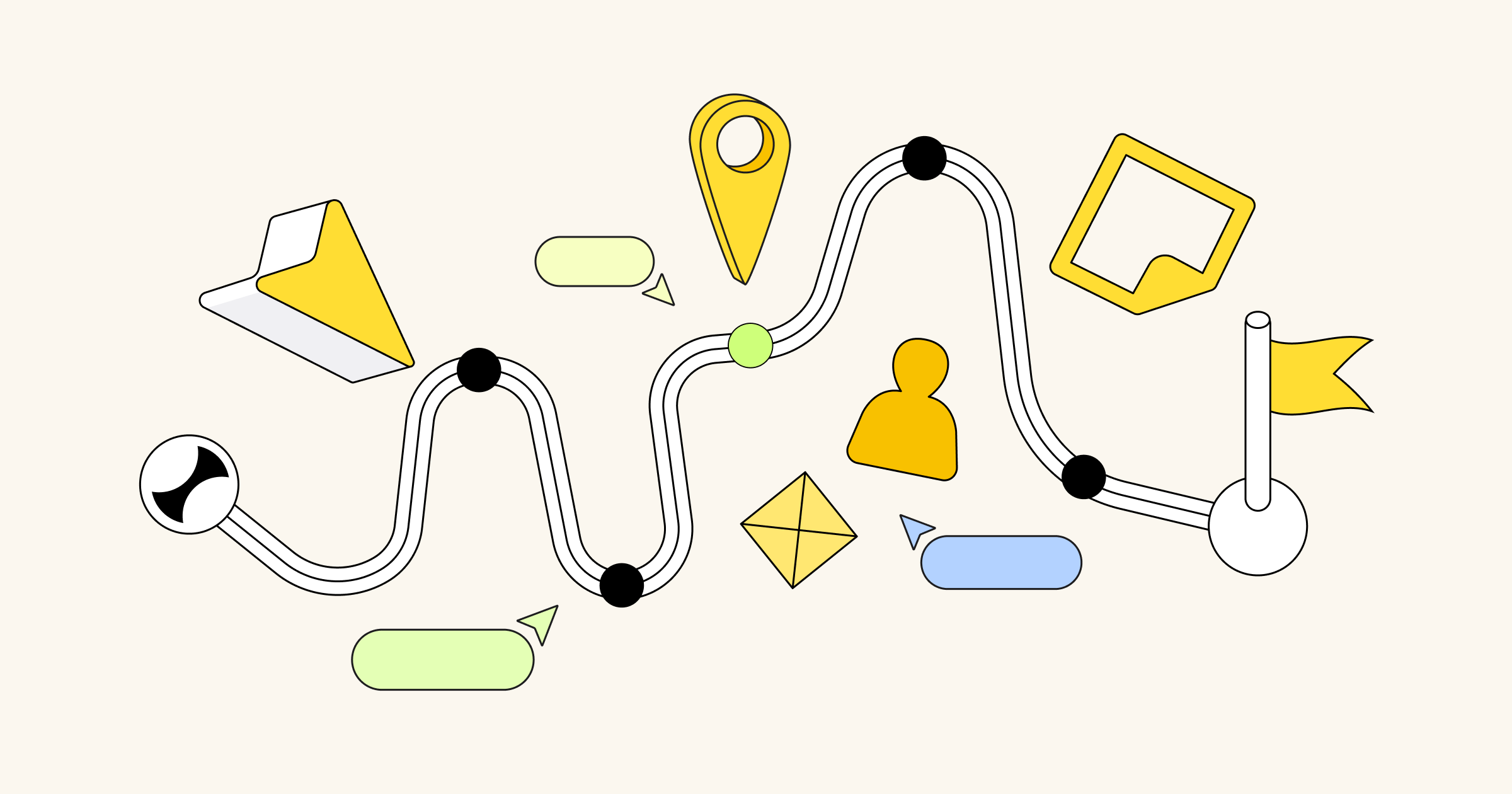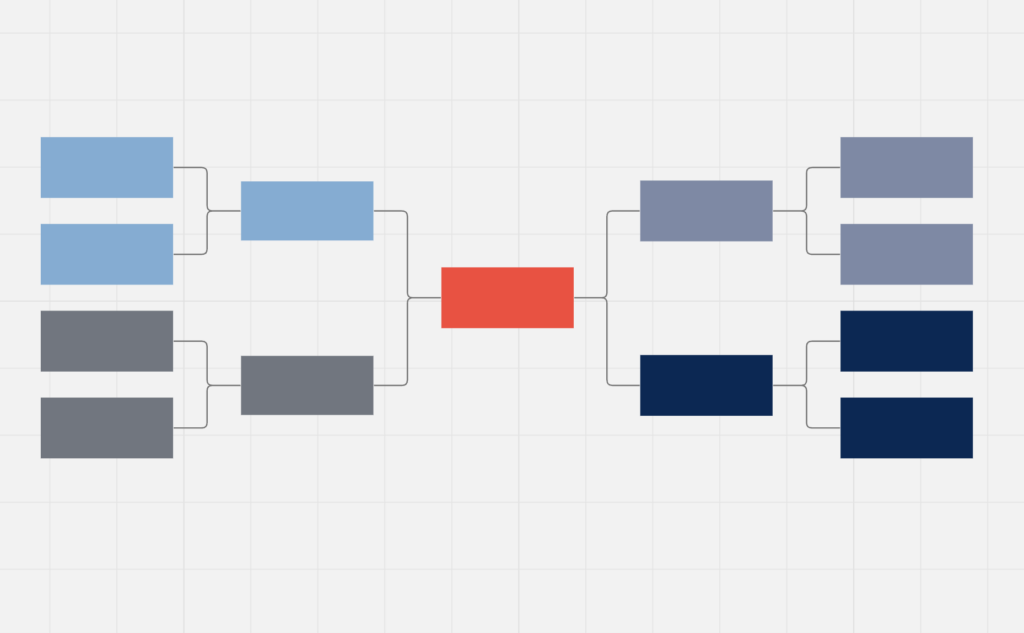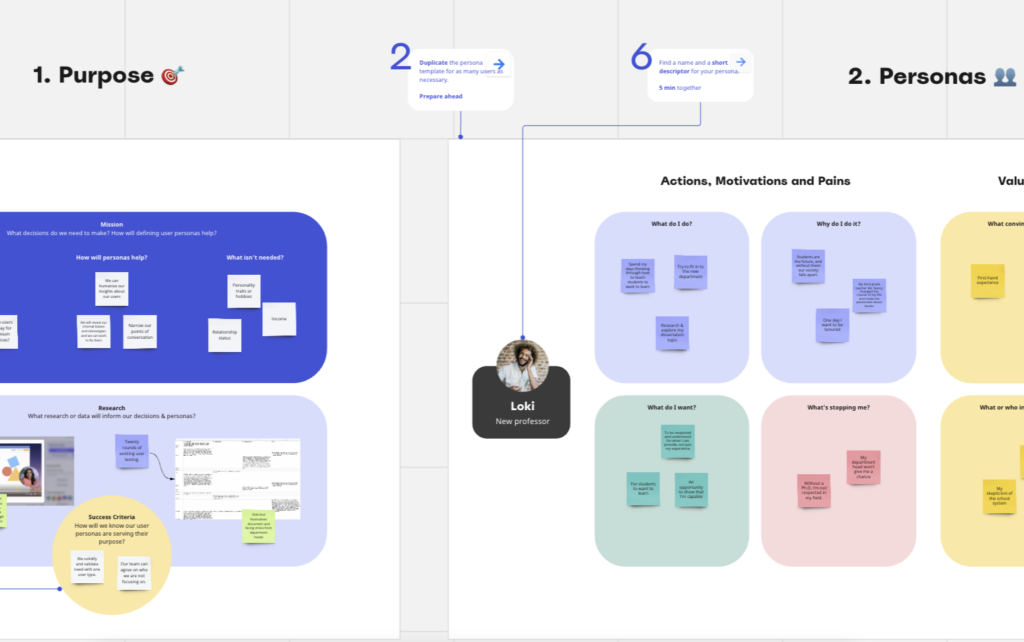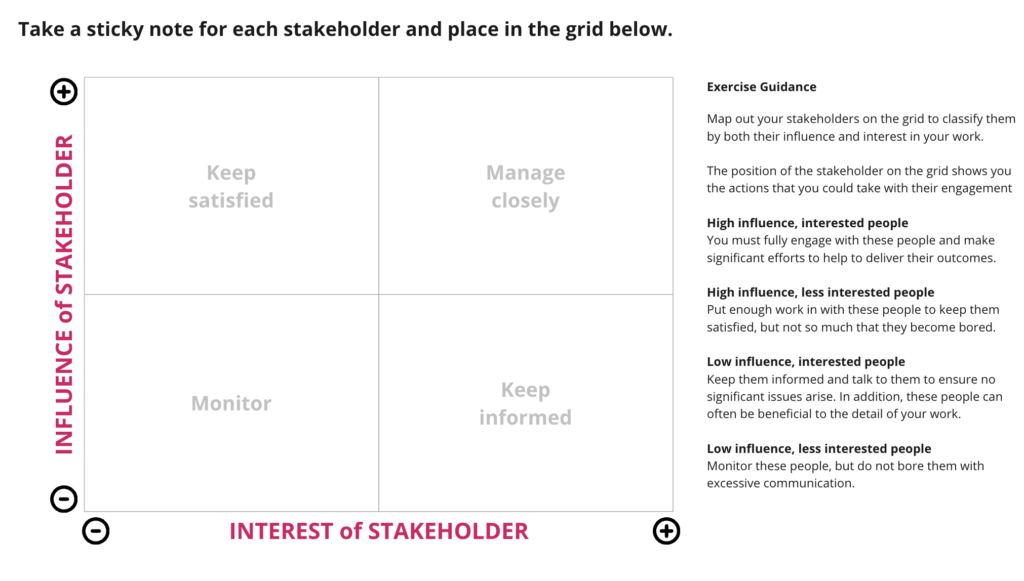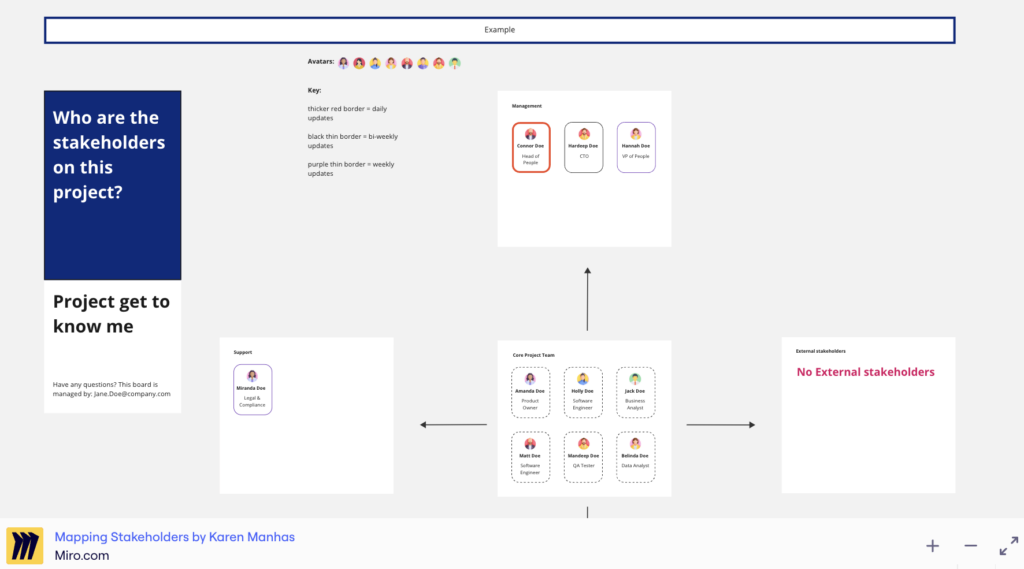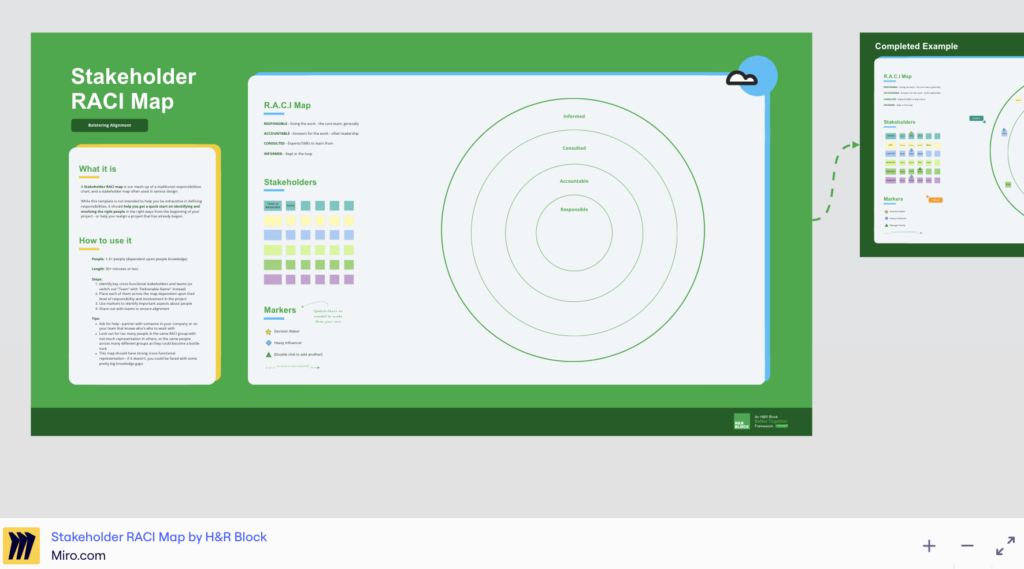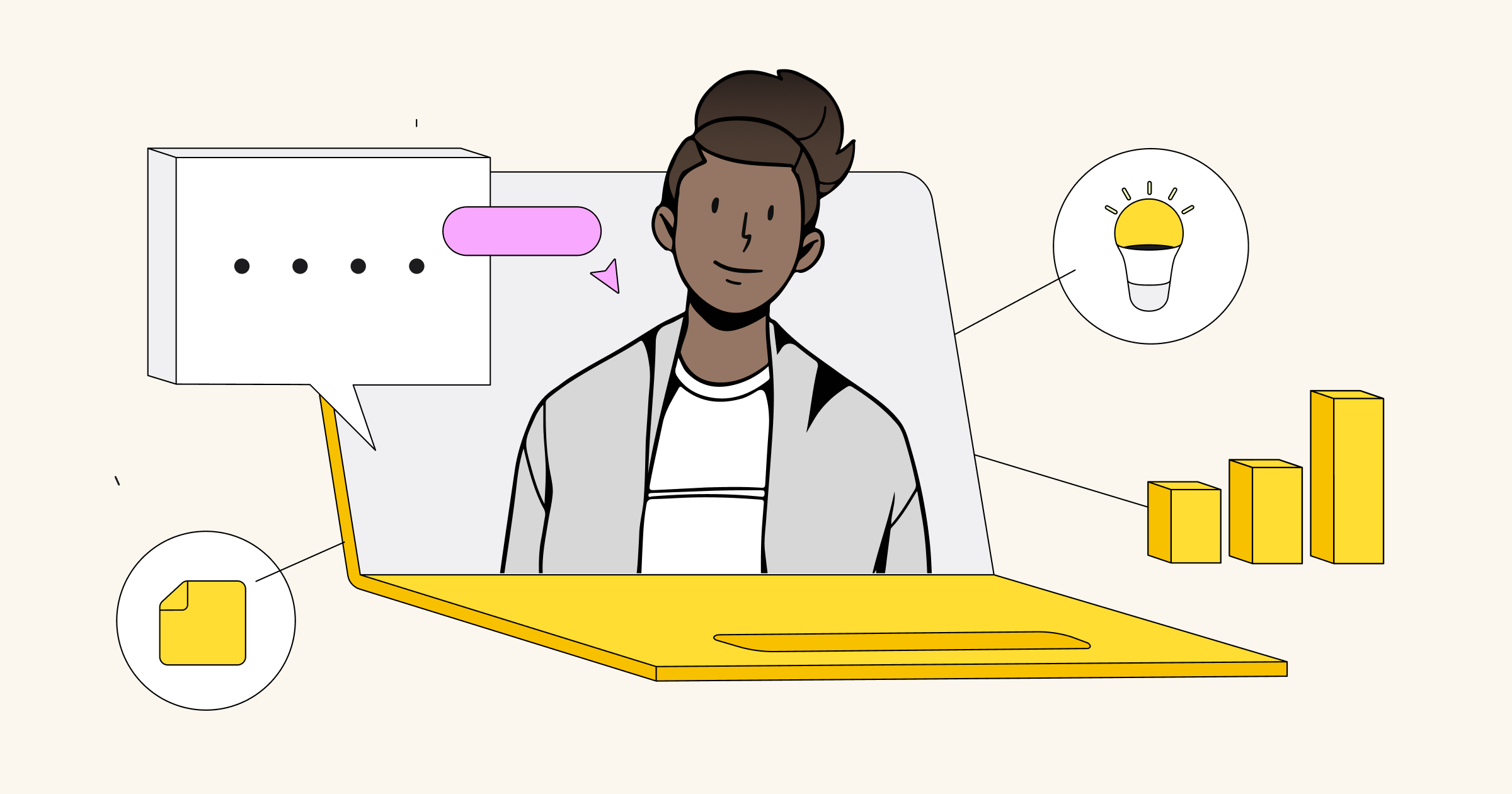Have you ever thought you had the green light for a project, only to have it blocked by an unseen decision-maker? One of the best ways to make sure you get buy-in from all the key players is through stakeholder mapping and analysis.
No matter your seniority in an organization, you can innovate and drive change. But to do so, you need to understand the web of stakeholders whose buy-in you need to earn. It’s not an easy task — which is why we created a step-by-step guide to help you navigate this process and find support for your projects.
What is stakeholder mapping?
An important part of stakeholder management, stakeholder mapping is the process of creating a visual representation of your stakeholders. In it, you lay out all the cross-functional stakeholders who have a stake in a product, project, or idea, all on one map. You can also document their roles and your relationship with them.
The main benefit of a stakeholder map is to see everyone who can influence your work and the relationships between them. Mapping your relevant stakeholders allows you to improve your stakeholder engagement and focus on relationship-building with important partners within your organization.
A simple stakeholder map example
This simple stakeholder map template uses a flow chart structure to show relationships between people and projects. In the center, you place your product or project. Inbound arrows to the product show which project stakeholders influence the creation of the product, and outbound arrows which stakeholders the project may impact.
This is just one kind of stakeholder map—you can see more examples in our template list below. Before jumping into mapping, though, take a step back to understand what you want to accomplish with a stakeholder map.
What are the benefits of stakeholder mapping?
Stakeholder mapping is part of the larger discipline of stakeholder management, a strategic approach to leveraging relationships to reach a goal. Stakeholder mapping allows you to identify key players that will influence your project’s success so you can create a communications and outreach plan.
1. Find out who has the most influence
When you build a stakeholder map, you can easily see who will have the highest level of influence over a project, whether it’s the CEO or a project manager.
2. Focus on those who benefit most
Stakeholder maps help you see who will benefit most from the end product so you can focus on marketing to that person for resources.
3. See where resources are most plentiful
Stakeholder maps often illuminate who has constraints and limited influence and who has more resources, so that you can put the right people on your project team.
4. Have a game plan
Overall, a stakeholder map gives you a good idea of who you’re trying to satisfy when building your product or project.
When do you need a stakeholder map?
It’s good to have a detailed stakeholder map and know how to involve the right people when you plan to launch a major project or product.
1. Building a product
When building a new product from scratch, you’ll need to consider your key stakeholders. Here is a list of potential stakeholders for product development:
- Customers/users. Knowing your audience is critical for creating a usable product. Consider your audience’s needs, wants, and challenges through user research. To better understand and segment your customer base, we recommend using our User Personas template.
- Industries/markets. Beyond product development, you need to take a close look at your competitive landscape and product/market fit. Researching competitors, examining market regulations, and following trends can be very useful.
- Suppliers. For certain products (especially for digital platforms like Airbnb, Uber, BlaBlaCar, and others), generating a supply of certain services is as important as creating demand. If you are building a platform, who are the key suppliers, and how you can ‘subsidize’ one side of the demand/supply equation if needed?
- Investors. If your company is funded, you might want to include venture capital firms as important stakeholders since they will have the power to influence your product’s future. Similarly, public companies are accountable to shareholders.
2. Penetrating a market
If you’re trying to break into a new market with your product, stakeholder mapping is key. Consider these key stakeholders in your research:
- New customers. Try asking yourself what the needs of those who haven’t heard about your product yet. Are there any subgroups within this group? We suggest using Personas template to better understand your new customers.
- Existing customers. Which personas are critical for your sustainable growth? Adding them to your map and understanding their challenges is key to your product’s success.
- Retailers. Who are the main external stakeholders for your project? Whether you are creating a physical or a digital product, you need strong partnerships to reach new audiences.
- Community members. If you have a brick-and-mortar presence, community outreach and listening are key to building trust. Take time to connect with key businesses, schools, or nonprofit organizations in the community and start a dialogue about community needs.
3. Starting a project from scratch
When you’re starting a brand new project, start with your internal stakeholders to make sure you have enough resources and internal support to reach the finish line. When pitching a proposal to leadership, find out who the key decision-makers are and learn how to frame the benefits in their language. Here are examples of internal stakeholders:
- Project Manager
- Product Manager
- Legal team
- CEO / C-Level exec
What are the different types of stakeholders?
Each product or project has internal and external stakeholders. Understanding these two types of stakeholders will help you set the right priorities and approach for each.
Internal stakeholders
Internal stakeholders are people on your team who are participating in building your product or delivering a project. Their level of engagement may vary but they all have an influence because they are a part of your organization. Here’s what a list of internal stakeholders might look like:
- CEO / C-level executive
- Product owner
- Project manager
- Agencies / Consultants
- Designer
- Developer
External stakeholders
External stakeholders are those who will be impacted by your project and product, though they don’t directly participate in working on it. Here are examples of external stakeholders:
- Customers
- Partners
- Shareholders/Investors
- Suppliers
- Government agencies
- Community members
Stakeholder vs. shareholder
It’s easy to confuse stakeholders with shareholders. While shareholders own a part of a public company through shares of stock and have a stake in the company’s performance, they don’t have influence on a project level. Stakeholders, on the other hand, can have influence and interest in a project for a variety of reasons.
How to build a stakeholder map in 4 easy steps
Next, let’s take a look how to build and use a stakeholder map. Here are four steps you should include in your stakeholder mapping process.
1. Brainstorming
Start by identifying all the potential stakeholders — people, groups, or organizations affected by your product or project, those who have influence over it, or have a vested interest or concern in its success.
Write down their names on in a shared online workspace like Miro using sticky notes or mind mapping. At this point, try to be as granular as possible — you can always eliminate duplicates or those who actually don’t have skin in the game later.
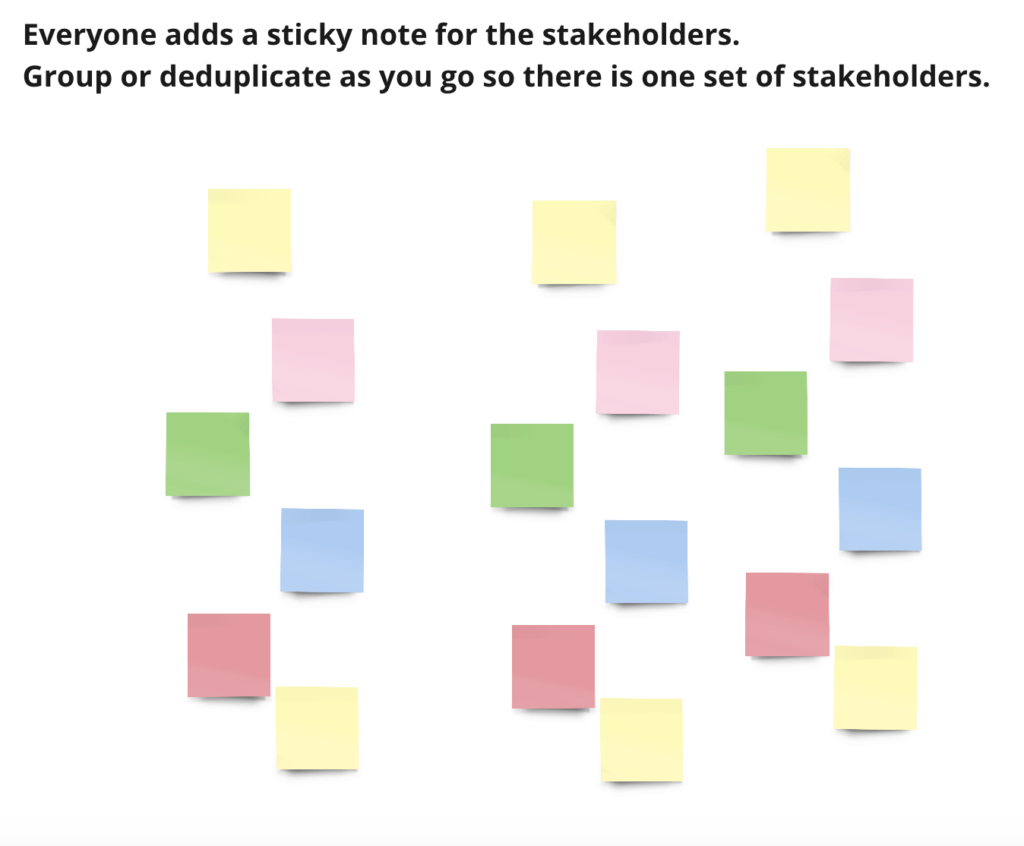
2. Categorization
Now it’s time to group the results of your brainstorming. Are there any stakeholders that can be put into one category? How can you name this category? Are there any types of stakeholders you forgot about? Miro uses AI to help you cluster sticky notes quickly to aid in categorization.
To make sure you didn’t forget about any of the key players, check out the ‘When stakeholder map is critical’ section to see examples of the types of stakeholders different projects require.
3. Prioritization
When you are dealing with a complex project with many stakeholders, it’s very important to prioritize them so you can create a plan for how to communicate with them. You can ask your project team to vote so you can see how the group defines the main players, or you can use a Mendelow matrix for a more nuanced view.
How to use a Mendelow stakeholder matrix to prioritize your project stakeholders
One of the best ways to prioritize stakeholders is to use a Mendelow power-interest matrix. First developed by researcher Aubrey L. Mendelow, the matrix lets you place your stakeholders into four quadrants by power and interest.
As the matrix shows, individual stakeholders can fall into four categories:
- High power, high interest (Manage Closely)
- High power, low interest (Keep Satisfied)
- Low power, high interest (Keep Informed)
- Low power, low interest (Monitor)
By completing this exercise, you can understand how each stakeholder could impact your project and determine the appropriate method for stakeholder communications for each one.
Need a ready-made template for this exercise? Use this stakeholder matrix board from Miro user John Spruce to kick-start your stakeholder mapping.
4. Stakeholder communications
Once your priorities are defined, it’s important to come up with a stakeholder engagement strategy. These best practices can help you create transparency and accountability for your project.
- Create unique engagement strategies for each of the categories on your power-interest matrix.
- You should have a lot of face-to-face communication with high-power, highly interested people. Building trust with them first is critical for your project.
- If someone is opposed to the project, you can get a buy-in from someone with the same level of power first and then ask the latter to persuade the former.
- Communicating early and often is also important because people will need time to think before making a decision.
- Give each stakeholder the right amount of information depending on their interest. Some people need just an executive summary, while others will want to dive deeper.
Stakeholder mapping templates examples
There’s more than one way to create a stakeholder map. Save time by selecting one of these ready-made stakeholder mapping templates to kick off your stakeholder analysis.
Mapping stakeholders by Karen Manhas
This easy-to-use virtual board from Karen Manhas breaks out stakeholders into categories like management, support, core team, and external. You can represent each stakeholder with an icon and use color coding or labels to indicate how frequently you should update each stakeholder.
Stakeholder management by Devbridge
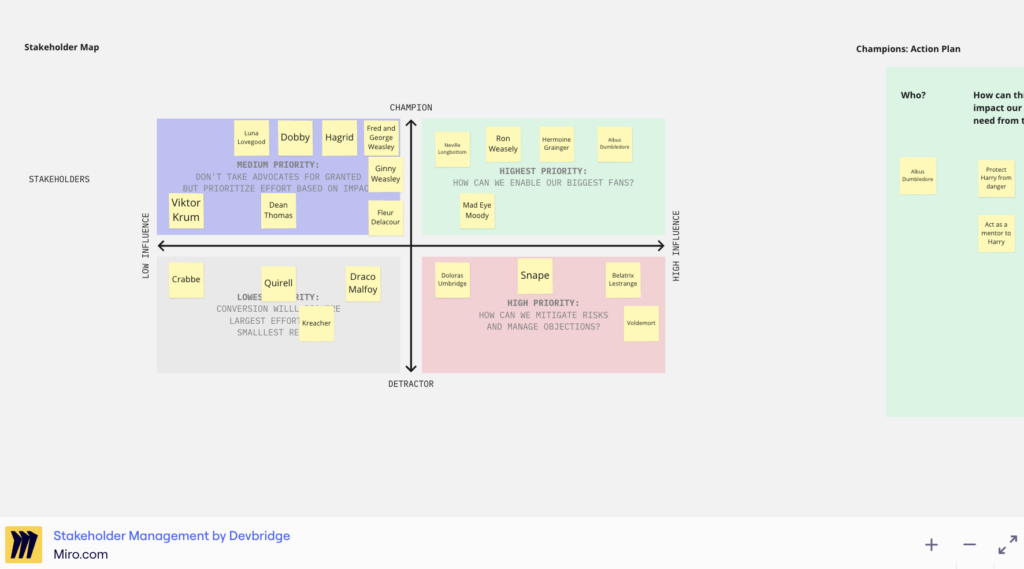
This Miro template starts with a power-interest matrix, then enables you to analyze each category of stakeholders with questions like “How can this stakeholder impact our success?” and “What motivates this stakeholder?”. This will help you unpack stakeholder expectations and brainstorm communication strategies. After completing this exercise, you’ll walk away with a stakeholder engagement strategy for how to manage and communicate with your champions and your detractors.
Stakeholder RACI chart by H&R Block
An alternative to the Mendelow matrix for visualization is the RACI chart. RACI stands for responsible, accountable, consulted, and informed. This map resembles a bullseye with expanding circles of influence. You can diagram out your stakeholders from most important (responsible) to informed (least important), label those with high influence, and map relationships between them.
Stakeholder map by VMware Tanzu Labs
If you plan to facilitate a workshop on stakeholder mapping, look no further. This map by Miro user VMmare Tanzu Labs provides a script and template for brainstorming stakeholders, a RACI map, and feedback at the end. The template comes complete with facilitator instructions, tool tips, and remote best practices.
The best tools for stakeholder mapping
While you can create a stakeholder map on a poster board with sticky notes, there are benefits to capturing this virtually. One benefit of a virtual stakeholder map is that you can take it with you—no snapping a picture on your phone and trying to recreate it later—and can revisit and edit it at any time.
Using an online workspace like Miro is also essential for including remote participants for real-time collaboration.
Here are four features to look for when considering stakeholder mapping tools:
- Live collaboration to let remote participants edit a map together in real-time
- Video and audio integrations to let your team members dialogue while building or presenting your map
- User-friendly visual features like stickies, arrows, branching, and color coding
- Sharing modes and integrations that let you integrate your map with your tech stack– and vice versa
One of the best ways to make sure you get buy-in from all the key players is stakeholder analysis and mapping. We created a step-by-step guide to help you navigate this process and make sure your projects and products are supported within your organization so you can make a real impact.

